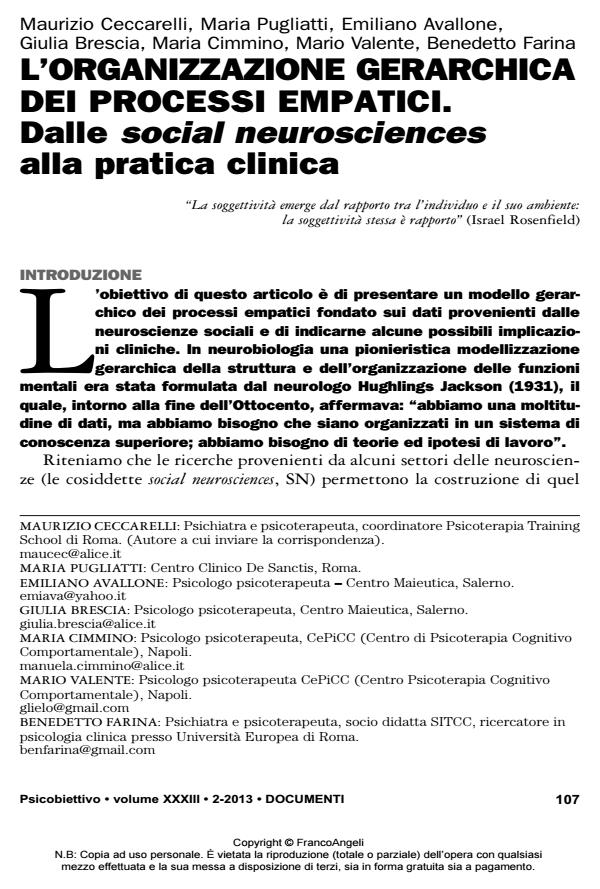The hierarchical organisation of the empathic processes. From the social neurosciences to the clinical practice
Journal title PSICOBIETTIVO
Author/s Maurizio Ceccarelli, Maria Pugliatti, Emiliano Avallone, Giulia Brescia, Maria Cimmino, Mario Valente, Benedetto Farina
Publishing Year 2013 Issue 2013/2
Language Italian Pages 22 P. 107-128 File size 317 KB
DOI 10.3280/PSOB2013-002010
DOI is like a bar code for intellectual property: to have more infomation
click here
Below, you can see the article first page
If you want to buy this article in PDF format, you can do it, following the instructions to buy download credits

FrancoAngeli is member of Publishers International Linking Association, Inc (PILA), a not-for-profit association which run the CrossRef service enabling links to and from online scholarly content.
Empirical evidence from social neurosciences show that empathy is based on interaction between different mental structure and functions. The purpose of this paper is to apply the hierarchical model of mind proposed by Hughlings Jackson one century ago to empathic processes. This model helps to better understand the founding role of empathy for the development of cooperative relationships and high reflexive mental functions. It also presents implications of jacksonian model for clinical practice and psychotherapy.
Keywords: Empathy; Social Neurosciences; Neurobiology; Psychopathology; Mirror Neurons; Mind Hierarchical Organizations
- Empathie et psychothérapie systémique. Implications théoriques et cliniques Luigi Onnis, in Cahiers critiques de thérapie familiale et de pratiques de réseaux /2016 pp.253
DOI: 10.3917/ctf.056.0253 - La svolta relazionale in psicoterapia cognitiva: origini e prospettive della psicoterapia cognitivo-evoluzionista Benedetto Farina, Giovanni Liotti, in QUADERNI DI PSICOTERAPIA COGNITIVA 42/2018 pp.11
DOI: 10.3280/QPC2018-042002
Maurizio Ceccarelli, Maria Pugliatti, Emiliano Avallone, Giulia Brescia, Maria Cimmino, Mario Valente, Benedetto Farina, L’organizzazione gerarchica dei processi empatici. Dalle social neurosciences alla pratica clinica in "PSICOBIETTIVO" 2/2013, pp 107-128, DOI: 10.3280/PSOB2013-002010